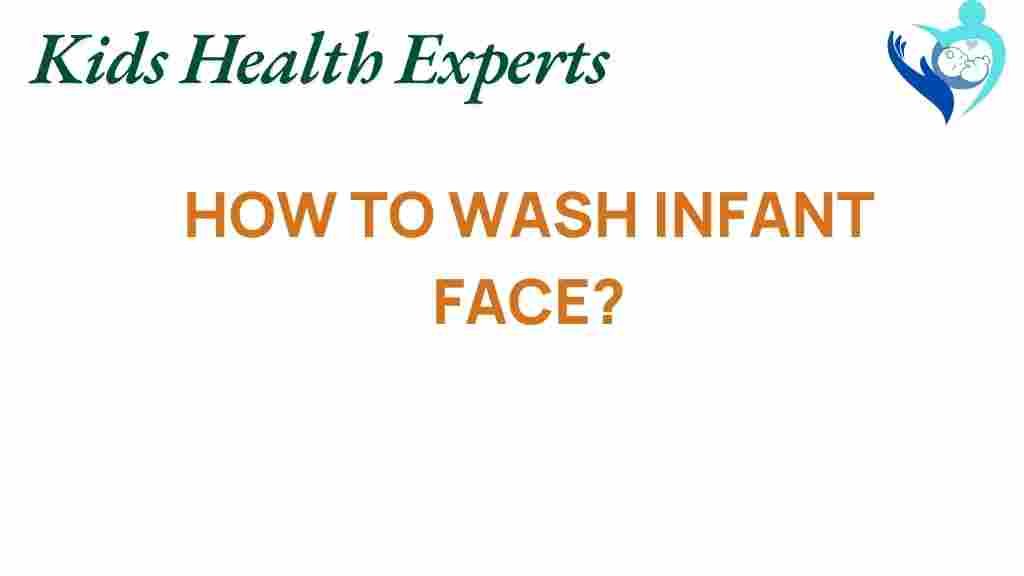The Essential Guide to Washing Your Infant’s Face Safely: Infant Care Tips
As a parent, ensuring your baby’s health and hygiene is paramount. One vital aspect of baby hygiene is learning how to wash your infant’s face safely. This essential guide will provide you with all the information you need for gentle cleansing, practical parenting tips, and nurturing practices that promote both health and safety.
Why Is Face Washing Important for Infants?
Infants have delicate skin that requires special care. Regularly washing your baby’s face can help:
- Remove dirt, milk residue, and drool
- Prevent rashes and skin irritation
- Promote healthy skin development
Understanding proper techniques for face washing is part of effective infant care and ensures that your baby is comfortable and safe during the process.
What You Need for Washing Your Infant’s Face
Before you begin, gather the following supplies:
- Soft washcloths or cotton pads
- Warm water (not hot)
- Baby-friendly cleanser (if necessary)
- Soft towel
Step-by-Step Process for Washing Your Infant’s Face
Here’s a simple step-by-step guide to help you wash your infant’s face safely:
Step 1: Prepare the Area
Choose a comfortable place where you can hold your baby securely, such as a changing table or a soft mat on the floor. Make sure the room is warm enough to keep your baby cozy.
Step 2: Wet the Washcloth
Take a soft washcloth and dip it in warm water. Wring out any excess water to avoid dripping. If you’re using a cleanser, apply a small amount to the wet cloth.
Step 3: Start with the Eyes
Gently wipe your baby’s eyes from the inner corner to the outer corner using a different part of the washcloth for each eye. This prevents the transfer of any potential irritants.
Step 4: Clean the Face
Using the wet cloth, gently wipe your baby’s cheeks, forehead, and nose. Be sure to be extra careful around the mouth and chin, where milk residue can accumulate.
Step 5: Rinse and Dry
If you’ve used a cleanser, rinse the washcloth with clean water and wipe your baby’s face again to remove any soap residue. Use a soft towel to gently pat the face dry.
Step 6: Moisturize (if necessary)
If your baby’s skin seems particularly dry, you can apply a gentle, baby-safe moisturizer to keep it hydrated. Always choose products specifically designed for infants to avoid irritation.
Common Troubleshooting Tips for Infant Face Washing
Even with careful techniques, some challenges might arise while washing your infant’s face. Here are some tips:
1. Baby Resists Face Washing
If your baby squirms or fusses during the process:
- Try to distract them with a toy or song.
- Keep the session short and sweet.
- Make it a part of your toddler routines to help them get accustomed to it.
2. Skin Irritation or Rashes
If you notice redness or irritation:
- Stop using any products that may be causing the reaction.
- Consult your pediatrician for appropriate skincare for babies.
3. Choosing the Right Cleanser
For baby hygiene, it’s essential to choose a gentle cleanser. Look for the following:
- Free from parabens and sulfates
- Hypoallergenic and fragrance-free
- Dermatologist-tested and suitable for sensitive skin
Additional Parenting Tips for Infant Care
Incorporating face washing into your daily routine can enhance your overall infant care practices. Here are some additional tips:
1. Establish a Routine
Creating a consistent routine helps your baby feel secure. Try to wash your baby’s face at the same time each day, perhaps during bath time or after meals.
2. Be Gentle and Patient
Your baby’s skin is sensitive. Always use a light touch and avoid any harsh scrubbing. Patience is key, as your baby is learning to adapt to new experiences.
3. Make it Fun!
Incorporate playful elements into face washing. Use a fun washcloth with their favorite cartoon character, or sing a silly song while you wash their face. This can help create a positive association with the activity.
Health and Safety Considerations
When it comes to infant care, health and safety should always be your top priority:
- Always supervise your baby during the cleansing process.
- Ensure all cleansing materials are clean and safe for use.
- Be cautious with the temperature of the water to prevent burns.
For more information on safe baby hygiene practices, you can visit this external link: Baby Hygiene Practices.
Conclusion
Washing your infant’s face is a vital part of their daily care routine and contributes significantly to their overall hygiene and skin health. By following this essential guide, using gentle cleansing methods, and being mindful of your baby’s comfort, you can ensure that face washing becomes a pleasant experience for both you and your child. Remember, nurturing practices like these not only promote health and safety but also strengthen your bond with your baby as you navigate the beautiful journey of parenting.
For more parenting tips and information on infant care, consider checking out our comprehensive resources. You can find more helpful insights here: Parenting Resources.
This article is in the category Care and created by KidsHealthExperts Team
